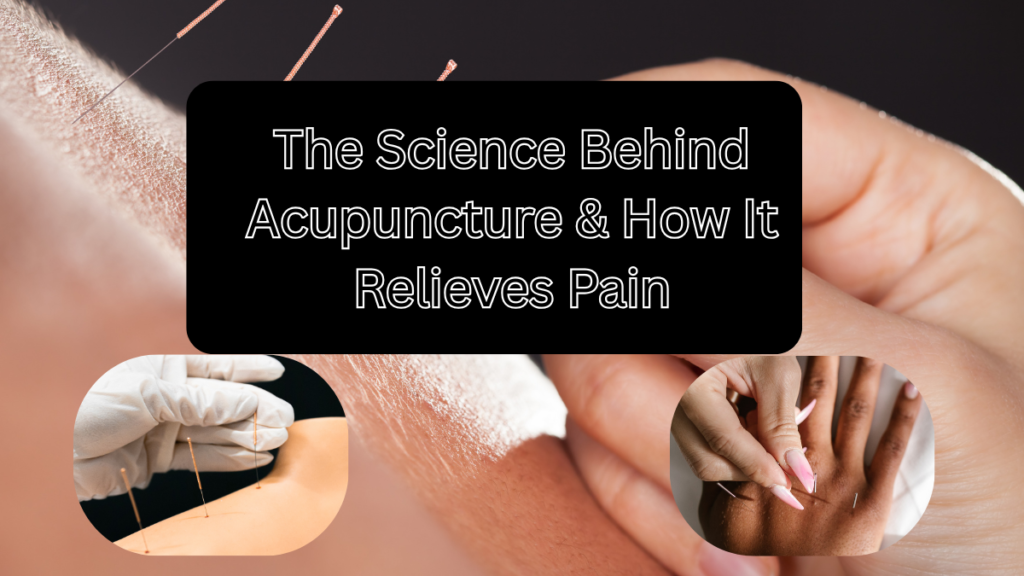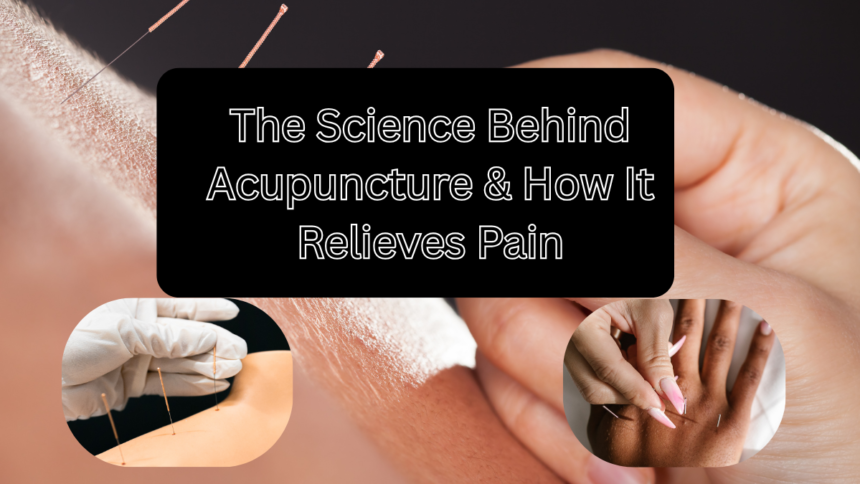Science Behind Acupuncture
For centuries, acupuncture has been a cornerstone of Traditional Chinese Medicine (TCM), offering relief for chronic pain, stress, and various health conditions. But how does sticking tiny needles into your skin actually work? Modern science has started to unravel the mystery behind this ancient practice, revealing fascinating insights into how acupuncture relieves pain and promotes healing.
Whether you’re a skeptic or a curious newcomer, understanding the mechanisms at play might just change your perspective on this time-tested therapy.

How Does Acupuncture Work? The Science Explained
At its core, acupuncture involves inserting ultra-thin needles into specific points on the body known as acupoints. According to TCM, these points lie along meridians, or energy pathways, that regulate the flow of Qi (pronounced “chee”), or life force. While Western medicine doesn’t recognize Qi in the same way, research suggests that acupuncture stimulates nerves, muscles, and connective tissue, triggering natural pain-relief mechanisms.
1. Acupuncture & the Nervous System
One of the most widely accepted theories is that acupuncture activates the body’s nervous system, prompting the release of endorphins—natural painkillers produced by the brain. Studies using fMRI scans have shown that acupuncture can:
- Modulate brain activity in pain-processing regions.
- Increase serotonin and dopamine levels, improving mood and reducing discomfort.
- Stimulate the vagus nerve, which helps regulate inflammation and stress responses.
A 2018 study published in Nature found that acupuncture reduces pain by triggering the release of adenosine, a compound that blocks pain signals. This helps explain why many patients experience relief even after just one session.
2. The Gate Control Theory of Pain
Another scientific explanation is the Gate Control Theory, which suggests that non-painful input (like acupuncture needles) can “close the gate” to painful signals, preventing them from reaching the brain. Essentially, the needles distract the nervous system, reducing the perception of pain.
Video Credits
3. Anti-Inflammatory Effects
Chronic pain is often linked to inflammation. Research indicates that acupuncture can:
- Lower pro-inflammatory cytokines (molecules that promote inflammation).
- Boost immune response by increasing white blood cell activity.
- Improve blood circulation, aiding tissue repair.
A 2020 meta-analysis in Pain Medicine concluded that acupuncture is particularly effective for conditions like osteoarthritis, migraines, and lower back pain, thanks to its anti-inflammatory properties.
Common Conditions Acupuncture Can Help With
Acupuncture isn’t just for pain—it’s used for a variety of health issues, including:
- Chronic pain (back pain, neck pain, arthritis)
- Migraines & tension headaches
- Stress, anxiety & insomnia
- Digestive disorders (IBS, nausea)
- Fertility issues & menstrual cramps
Many professional athletes, including NBA players and Olympic competitors, use acupuncture to speed up recovery and enhance performance.
What to Expect During an Acupuncture Session
If you’re considering acupuncture, here’s what typically happens:
- Consultation – The practitioner assesses your health history and concerns.
- Needle Insertion – Hair-thin needles are placed at strategic points (you might feel a slight tingling or warmth).
- Relaxation – You’ll rest for 15-30 minutes while the needles work.
- Post-Session Effects – Many people feel deeply relaxed or energized afterward.
Pro Tip: Drink water and avoid heavy meals before your session to enhance effectiveness.
Debunking Acupuncture Myths
Myth 1: “Acupuncture Hurts”
While some fear needles, acupuncture uses much thinner needles than injections. Most people feel minimal discomfort—if any.
Myth 2: “It’s Just a Placebo”
Studies comparing real acupuncture to “sham” acupuncture (fake needle placements) show that real acupuncture consistently provides better pain relief, confirming its biological effects.
Myth 3: “You Need Years of Treatment”
Some people feel improvement after just 1-3 sessions, though chronic conditions may require more.
Final Thoughts: Is Acupuncture Right for You?
The science behind acupuncture is compelling, with growing evidence supporting its role in pain management and overall wellness. Whether you’re dealing with chronic pain, stress, or inflammation, acupuncture offers a drug-free, holistic approach to healing.
Have you tried acupuncture? Share your experience in the comments! If you’re curious but hesitant, consider booking a session with a licensed acupuncturist to see if it works for you.
Key Takeaways
✔ Acupuncture stimulates nerves, releases endorphins, and reduces inflammation.
✔ It’s effective for pain, migraines, stress, and digestive issues.
✔ Modern research supports its benefits beyond placebo effects.
✔ Sessions are generally painless, with many feeling relief quickly.
Ready to give acupuncture a try? Find a certified practitioner near you and take the first step toward natural pain relief!









